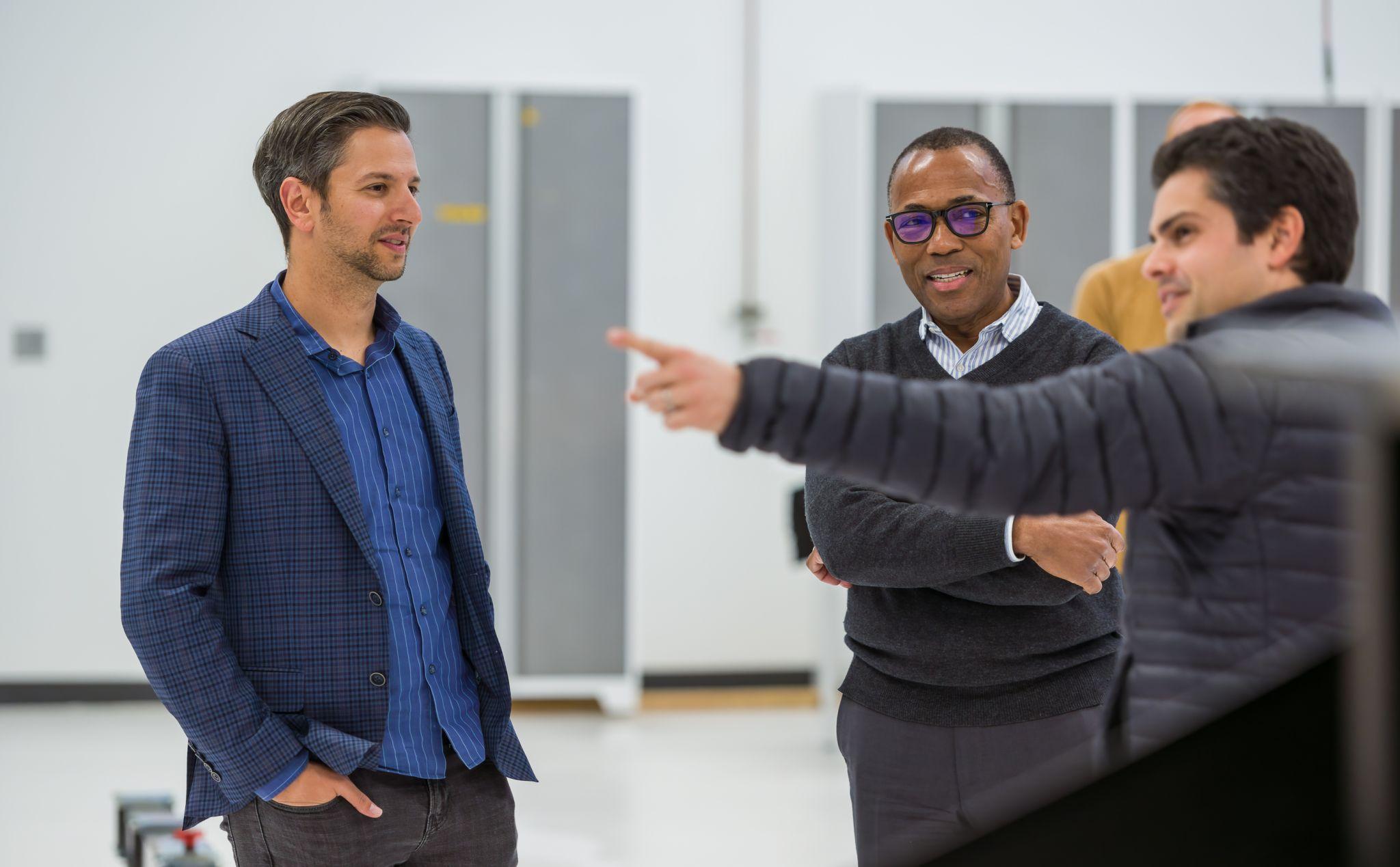
Acting FAA Administrator Billy Nolen and Director of Certification Lirio Liu toured Archer Aviation’s headquarters on Jan. 31.
The FAA administrator paid a visit to Archer Aviation headquarters on Jan. 31, demonstrating the agency’s commitment to integrating electric vertical takeoff and landing (eVTOL) vehicles and advanced air mobility (AAM) technologies.
The visit from Acting FAA Administrator Billy Nolen and Director of Certification Lirio Liu to the startup’s San Jose, California-based headquarters lasted roughly 5 hr. It included a tour of the company’s facilities and a behind-the-scenes glimpse of ongoing development work related to technology and systems being built for the initial Midnight prototype aircraft, Archer CEO Adam Goldstein said.
The visit came one day after Nolen and Liu visited the San Marina, California-based headquarters of Joby Aviation.
Briefing Aviation Week after the visit, Goldstein identified two main takeaways that he said left him “very encouraged” about the FAA’s commitment to certifying eVTOLs and next-generation propulsion technologies. The first takeaway: certifying eVTOLs by 2025 is now one of the FAA’s “top three” main priorities, he says.
The second main takeaway was that the FAA is very focused on having eVTOLs used “at scale” in Los Angeles for the 2028 Olympics, which Goldstein says offers a “valuable chance for the U.S. to prove it’s still a leader in aviation and an innovator in sustainable transportation forms.”
“I think the reason the FAA is showing us so much support is that we have a vehicle that’s going to be certified at the very highest levels of safety,” Goldstein says. “It’s a vehicle that reduces noise and pollution and it’s a sustainable and innovative form of innovation. And so you take all those aspects, and it’s a perfect way to demonstrate progress and leadership in aviation.”
Goldstein says 2023 will be a pivotal year for the eVTOL sector, with the emphasis shifting from concepts and models to rolling out production-conforming aircraft. “The time for skepticism is over–there’s nothing left to be skeptical about,” Goldstein says. “We’ll have real conforming, piloted aircraft built this year and we’ll start flying them early next year, and you’ll probably see a handful of other groups doing that too.”
But Goldstein only sees a small number of players in the nascent eVTOL space–including Archer, Joby and Beta Technologies–who he thinks are up to the task of actually achieving FAA certification in the next couple years. Most of the other startups looking to develop a piloted, passenger-carrying vehicle lack the capital, leadership and expertise to cross the finish line in a realistic timeline, he says.
“There are just not that many companies who have raised enough capital and are doing urban air mobility [UAM] with fixed-wing vehicles that are piloted–because you can’t get to market today with an autonomous vehicle,” Goldstein says. “When we’re asked by our investors who we compete against–there are only two real companies besides us who have passed that filter.”
Archer’s first production Midnight aircraft is currently under assembly and getting ready for ground and flight testing later this year. The company is expecting the Midnight to achieve critical design review sometime in the first half of 2023, although Goldstein declined to offer a firmer timeline.





